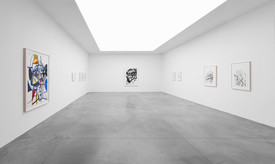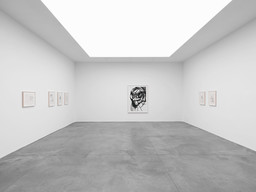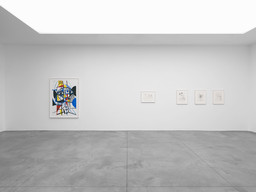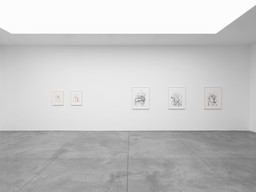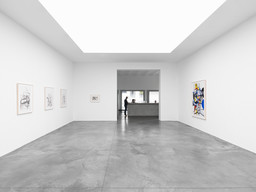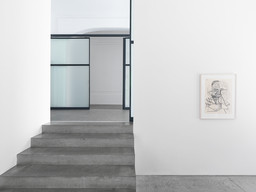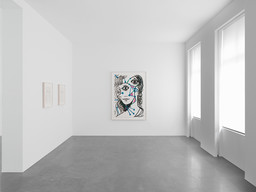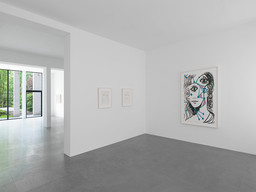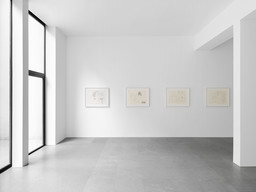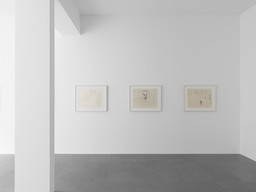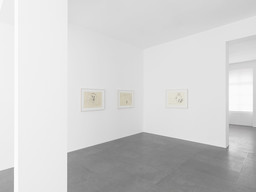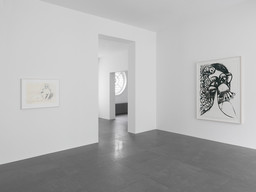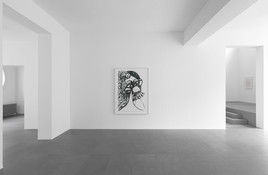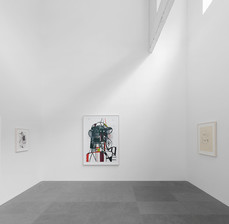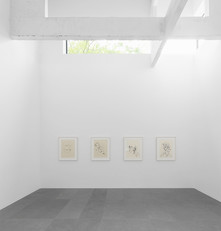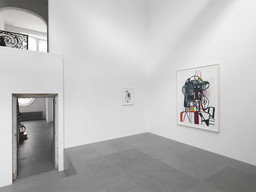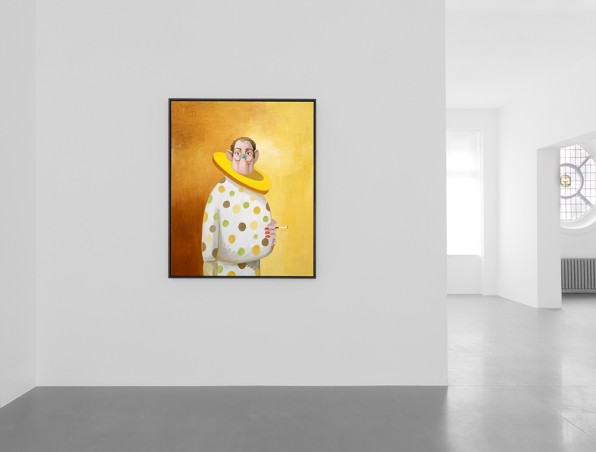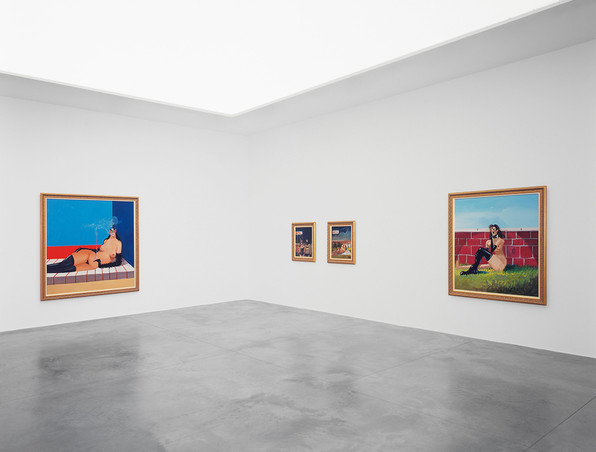George Condo: Works on Paper
29 May—11 July 2015
6 rue St-Georges | St-Jorisstraat
| 1 | / | 16 |
×
Xavier Hufkens is pleased to announce an exhibition of works on paper by George Condo at 6 rue St-Georges.
The works in this exhibition underscore the fundamental importance of drawing within George Condo’s practice. Ranging from bold, large-scale works in oil-stick, through to ink and pencil compositions of varying degrees of complexity, the drawings bear witness to the artist’s virtuoso handling of different scales, formats and media. While he rose to prominence as a painter, Condo is a consummate draftsman who does not believe in the traditional art-historical hierarchy that privileges oil painting over works on paper. Says Condo: ‘I want to reverse that, to stand up for drawing.’
His compositions are imaginary constructs that, on the one hand, open a window onto an inner world. On the other hand, they also reveal an objective, outward-looking dialogue with art history and popular culture. It is a conversation that has provided him with a rich wellspring of inspiration throughout his thirty-year career, not only with regard to subject matter, but also in terms of approach and technique. Condo’s interaction with the work of his predecessors is the leitmotiv that runs throughout his highly diverse and idiosyncratic oeuvre, one that has seen him ‘borrow’ freely from the art-historical canon in order to express complex and conflicting emotional states, or to expose contemporary political, cultural and social mores. While the works in this exhibition share many similarities with his paintings – figuration, portraiture, fragmentation, caricature – they nevertheless betray a shift, and mark a resurgence of Condo’s engagement with the work of Picasso. At the same time, they are also informed by his abiding interest in popular American culture, including Playboy magazine, comics and cartoons.
The formal correspondences between Condo’s drawings and Picasso’s cubist period are self-evident, although Condo prefers to define his own art as ‘psychological cubism’. He has said: ‘Picasso painted a violin from four different perspectives at one moment. I do the same with psychological states. Four of them can occur simultaneously… hysteria, joy, sadness, and desperation. If you could see these things at once that would be like what I’m trying to make you see in my art.’
Condo’s drawings portray a grotesque reality that is characterized by nudity and sex, and which often exudes visceral emotions such as rage, insanity, hysteria, violence, loneliness and alienation. The figures are human, but often distorted and hybrid, depicted with multiple eyes and mouths. Condo aficionados will recognise familiar characters from earlier paintings, such as the butler Jean Louis, while one drawing is executed upon a blank orchestral score, a reminder of Condo’s musical abilities. The sense of distress that emanates from a number of works is linked to the artist’s profound reflection on the human condition: ‘If you can paint the anguish of everyday life and give some dignity to everyday despair… or some of the emotions that regular people have, their feelings or thoughts become worthy of an artistic endeavour. There’s something beautiful about recognizing those kinds of things in life and saying something about them… If you think about people’s feelings and emotions, or unimportant and insignificant thoughts, and shine a light on them, you get a kind of cinematic moment, like what happens before the first word on a page in a novel.’
George Condo (b. 1957) lives and works in New York. Solo exhibitions include Mental States, New Museum, New York (travelling exhibition, 2012-2011) and La Civilisation Perdue, Musée Maillol, Paris (2009). His works feature prominently in important public and private collections, including The Museum of Modern Art, New York; The Metropolitan Museum of Art, New York; The Solomon R. Guggenheim Museum, New York; The Whitney Museum of American Art, New York; Museu d’Art Contemporani de Barcelona, Barcelona; Astrup Fearnley Museet, Oslo; and the Fonds National d’Art Contemporain, Paris.
